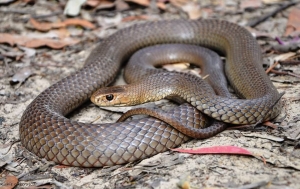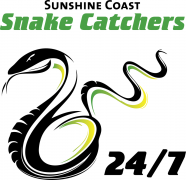
Significance to Humans:
Highly Venomous
They are regarded as one of the most venomous snakes in the world, in fact they are the 2nd most toxic land snake in the world. A bite from this can and will cause death if not treated correctly. Bites from this species have caused human fatalities. The Eastern Brown Snake accounts for more fatalities than any other Australian Snake. They have one of the most impressive defensive displays out of all snakes. Bites from this species should be treated immediately and attended to with correct first aid.
General description:
This species is highly variable in colouration and pattern. Colour variations include all shades of brown, grey, orange, black and to make things more confusing they can even have bands or stripes down there body. The belly colour is usually cream, yellow or orange with scattered orange or grey blotches. Hatchling and juveniles particularly vary in colour, frequently having dark heads or neck bands, or being completely banded along the body length. Midbody scales at 17 rows. They grow to approx. 1.5m on average but specimens over 2 meters have been recorded. They are a diurnal, active hunter but has been seen active on hot nights. Not regarded as a climbing species but may occasionally climb in search of potential prey. They will quickly retreat if they feel threatened to nearby cover. Their diet primarily consists of rats and mice but will occasionally eat lizards, frogs and other snakes.
Habitat on the Sunshine Coast:
They occupy a wide range of habitats but generally prefers drier habitat. We have relocated Eastern browns from most suburbs on the Sunshine Coast at one point or another. They can occupy dry open forest, wood and shrub-land, grassland, farmland. Very successful in agricultural regions where tree clearing & introduction of mice and rats has created ideal habitat & abundance of food.
Around the home:
Commonly seen cruising through backyards with a strong rodent presence and will commonly hang around bird aviaries, chicken coups, feed sheds and under concrete slabs. Due to its active foraging nature it often enters homes through gaps big enough for it to fit through which often includes open doors or garages. Any ground cover may be utilised such as timber piles, sheet iron, rock walls and heavy vegetation. The maintenance of yards and the control of spilt seed and other food associated with pets may assist in the control of rodents which this species exploits so well.
